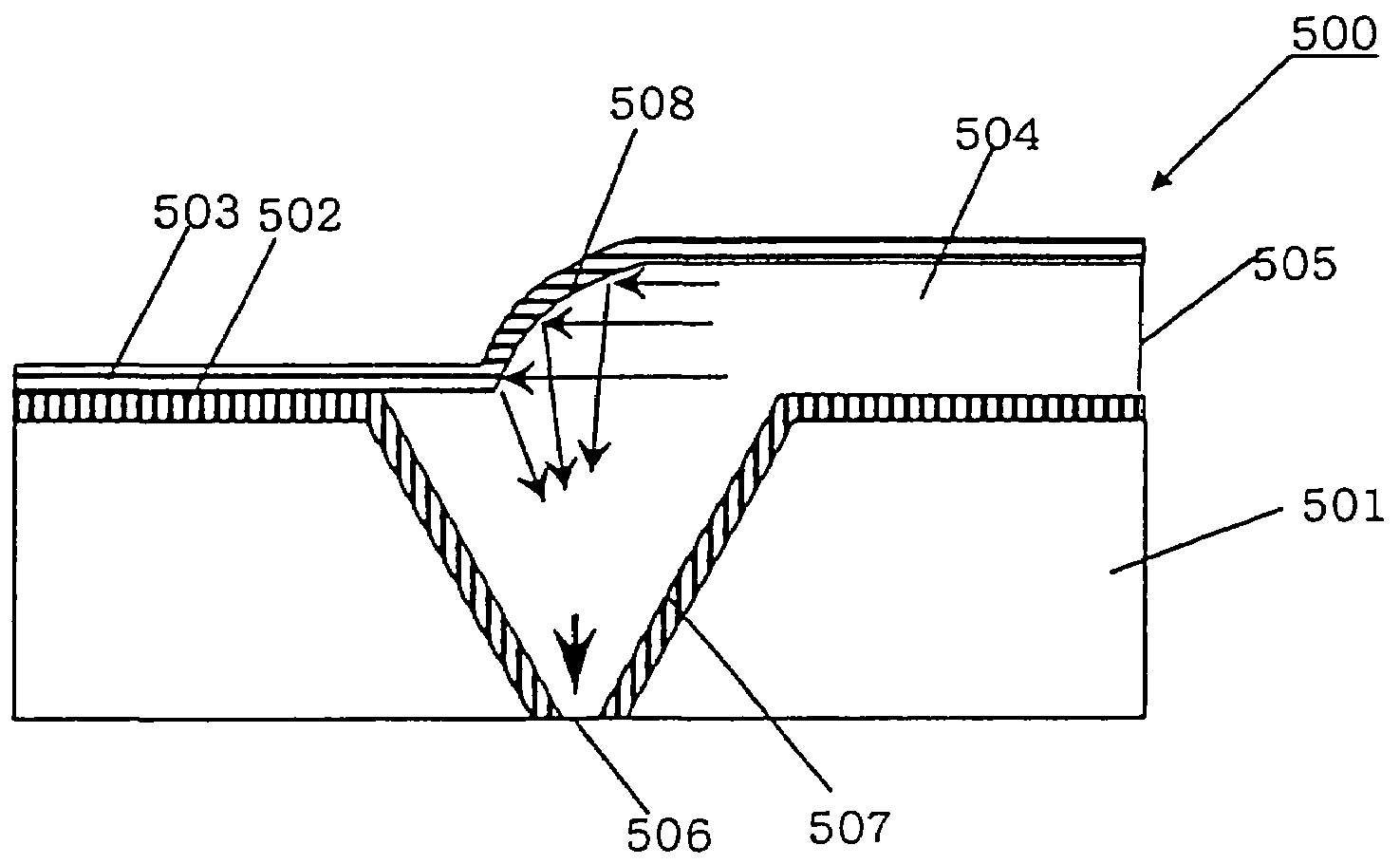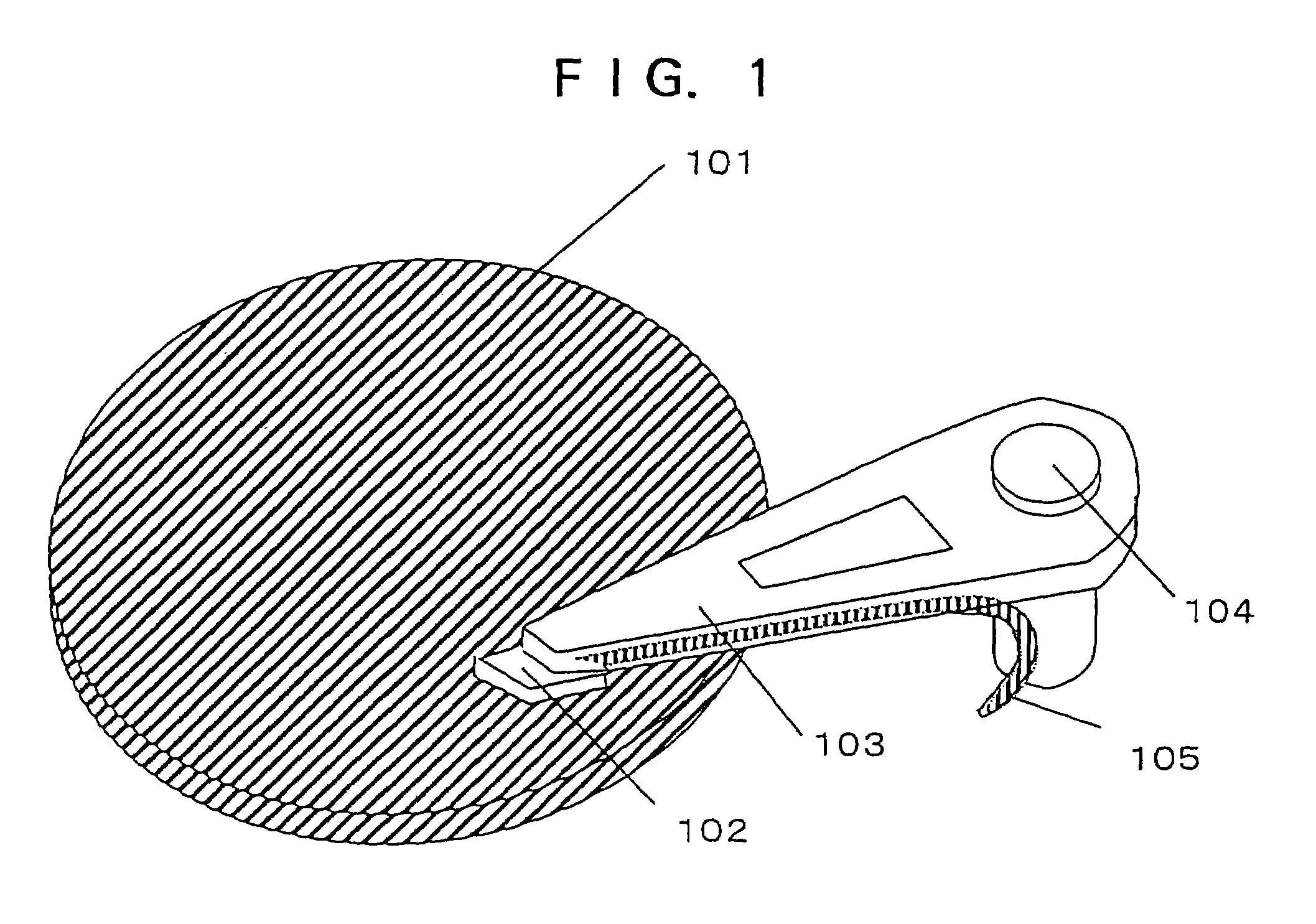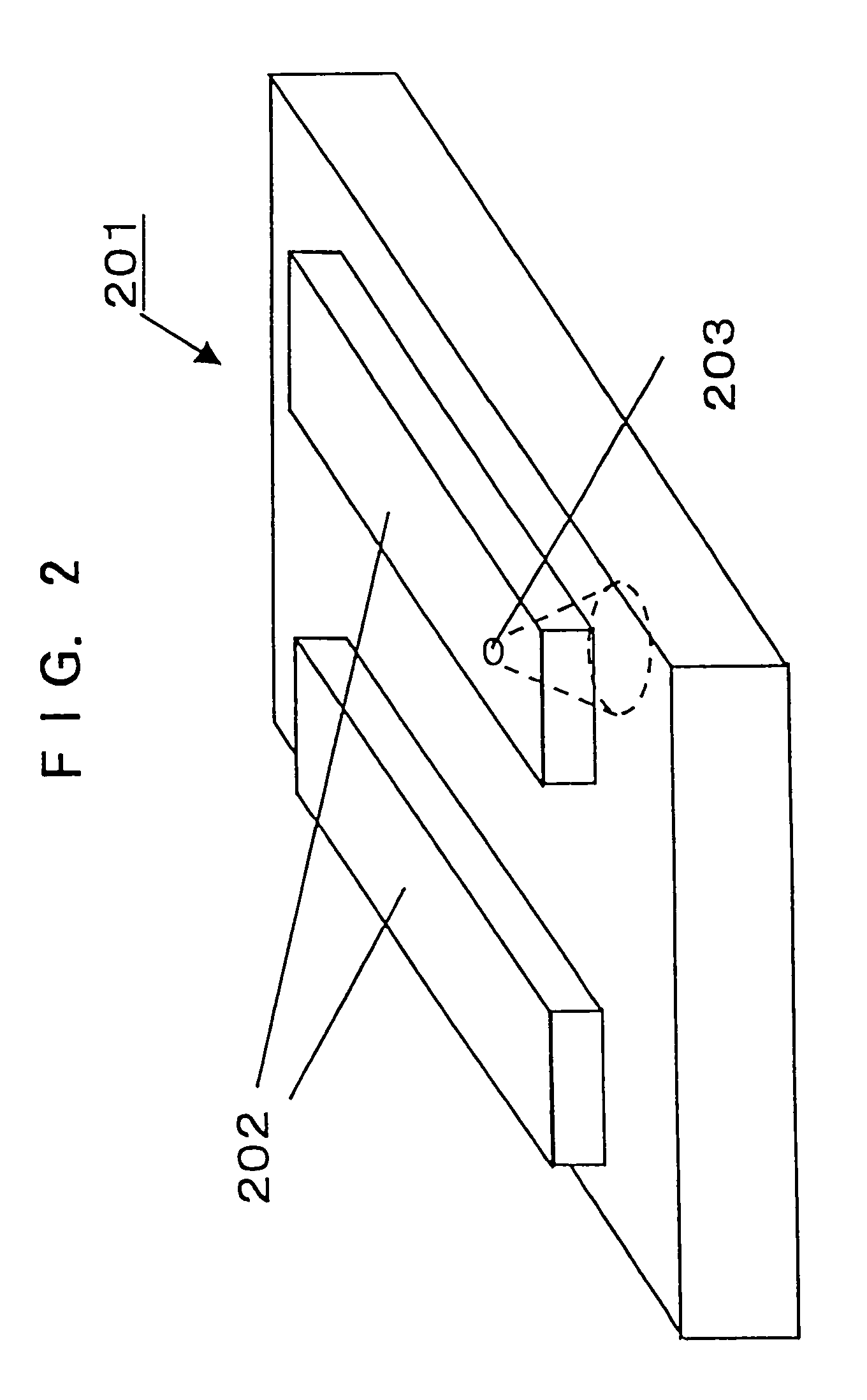Near-field optical head having tapered hole for guiding light beam
a technology of optical head and guiding light beam, which is applied in the field of near-field optical head, can solve the problems of difficult to read and write signals, difficult to maintain a distance between the disk and the aperture, and the head is difficult to control the position relative to the disk motion, etc., and achieves the effect of increasing the speed of rotation of the recording medium and high speed
- Summary
- Abstract
- Description
- Claims
- Application Information
AI Technical Summary
Benefits of technology
Problems solved by technology
Method used
Image
Examples
embodiment 1
[0188]FIG. 1 illustrates a schematic view of an example of an optical storing and reading-out apparatus according to Embodiment 1 of the invention. A near-field optical head 102 is arranged over a disk 101 (media) rotating at high speed to keep a constant distance to the disk 101 due to a floating force undergone by fluid motion caused by the rotation and a load weight of an arm 103. The way of keeping the distance to the disk 101 may adopt a method to control the interaction, such as tunnel current or interatomic force, caused between the near-field optical head 102 and the media surface. The near-field optical head 102 is supported at a tip of the arm 103. By moving the arm 103 in a horizontal direction by a rotary shaft 104 having a motor, the near-field optical head 102 can be scanned to an arbitrary point on the disk 101. The light propagated through an optical waveguide (or may be an optical fiber) 105 connected to the arm 103 is introduced into an optical waveguide (light int...
embodiment 2
[0209]FIG. 8 shows a sectional view of a part of a near-field optical head 800 according to Embodiment 2. In FIG. 8, an optical waveguide 804 is provided through a light reflection film 802 on a silicon substrate 801 having an aperture 806 and further a light reflection film 803 is provided thereon, similarly to the near-field optical head 500 according to Embodiment 1. The aperture 806 has a microscopic diameter of less than 200 nano-meters in order to produce near-field light due to light introduced through a taper 807.
[0210]The near-field optical head 800 according to Embodiment 2 is in a structure possessing a focusing function in the optical waveguide layer 804 to cause light to be incident on a light incident end 805 for light incidence. If as shown in FIG. 8 the light incident end 805 is made in shape in a convex surface form, the light emitted from a laser light source or optical fiber not shown in the figure is incident at the light incident end 805 into the optical wavegui...
embodiment 3
[0215]FIG. 9 shows a sectional view of part of a silicon substrate constituting for a near-field optical head according to Embodiment 3. In FIG. 9, a silicon substrate is illustrated wherein a taper is formed by two different slant surfaces.
[0216]The near-field optical head of Embodiment 3 is improved in optical efficiency in the vicinity of an aperture by making moderate the slant surface in the vicinity of the aperture, i.e. widening the taper angle in the vicinity of the aperture. For propagation light in general, propagation loss is greater in a region where the optical waveguide for light propagation is smaller in width than a wavelength λ. Accordingly, by widening the angle of the taper in the vicinity of the aperture, the region that the width is smaller than the wavelength λ is decreased thus making possible to increase the amount of light reaching the aperture. This results in increase in intensity of near-field light to be caused through the aperture.
[0217]The taper 507 in...
PUM
| Property | Measurement | Unit |
|---|---|---|
| slant angle | aaaaa | aaaaa |
| slant angle | aaaaa | aaaaa |
| angle | aaaaa | aaaaa |
Abstract
Description
Claims
Application Information
 Login to View More
Login to View More - R&D
- Intellectual Property
- Life Sciences
- Materials
- Tech Scout
- Unparalleled Data Quality
- Higher Quality Content
- 60% Fewer Hallucinations
Browse by: Latest US Patents, China's latest patents, Technical Efficacy Thesaurus, Application Domain, Technology Topic, Popular Technical Reports.
© 2025 PatSnap. All rights reserved.Legal|Privacy policy|Modern Slavery Act Transparency Statement|Sitemap|About US| Contact US: help@patsnap.com



